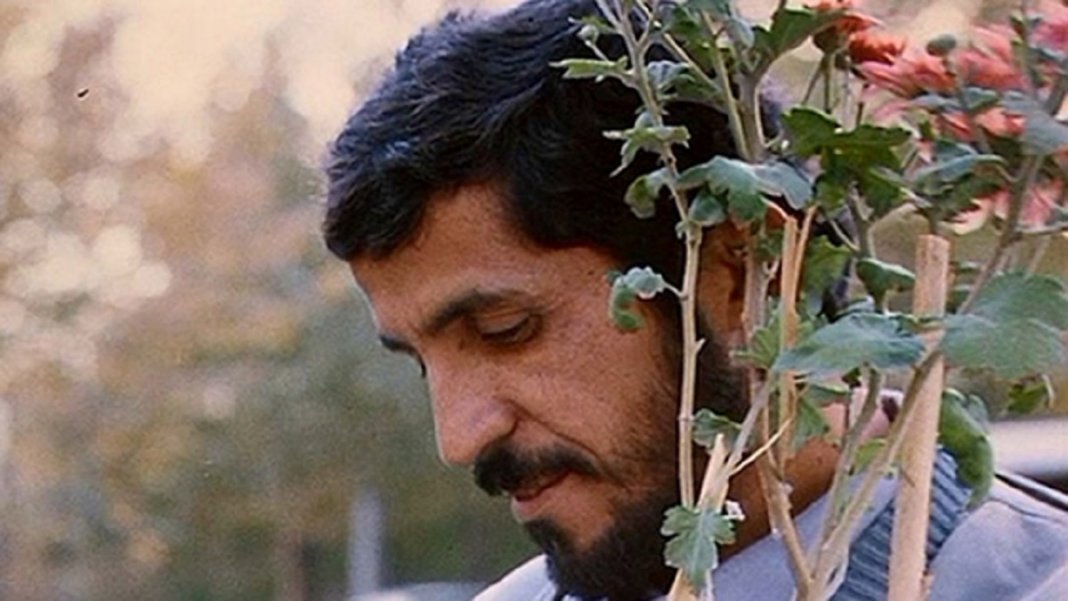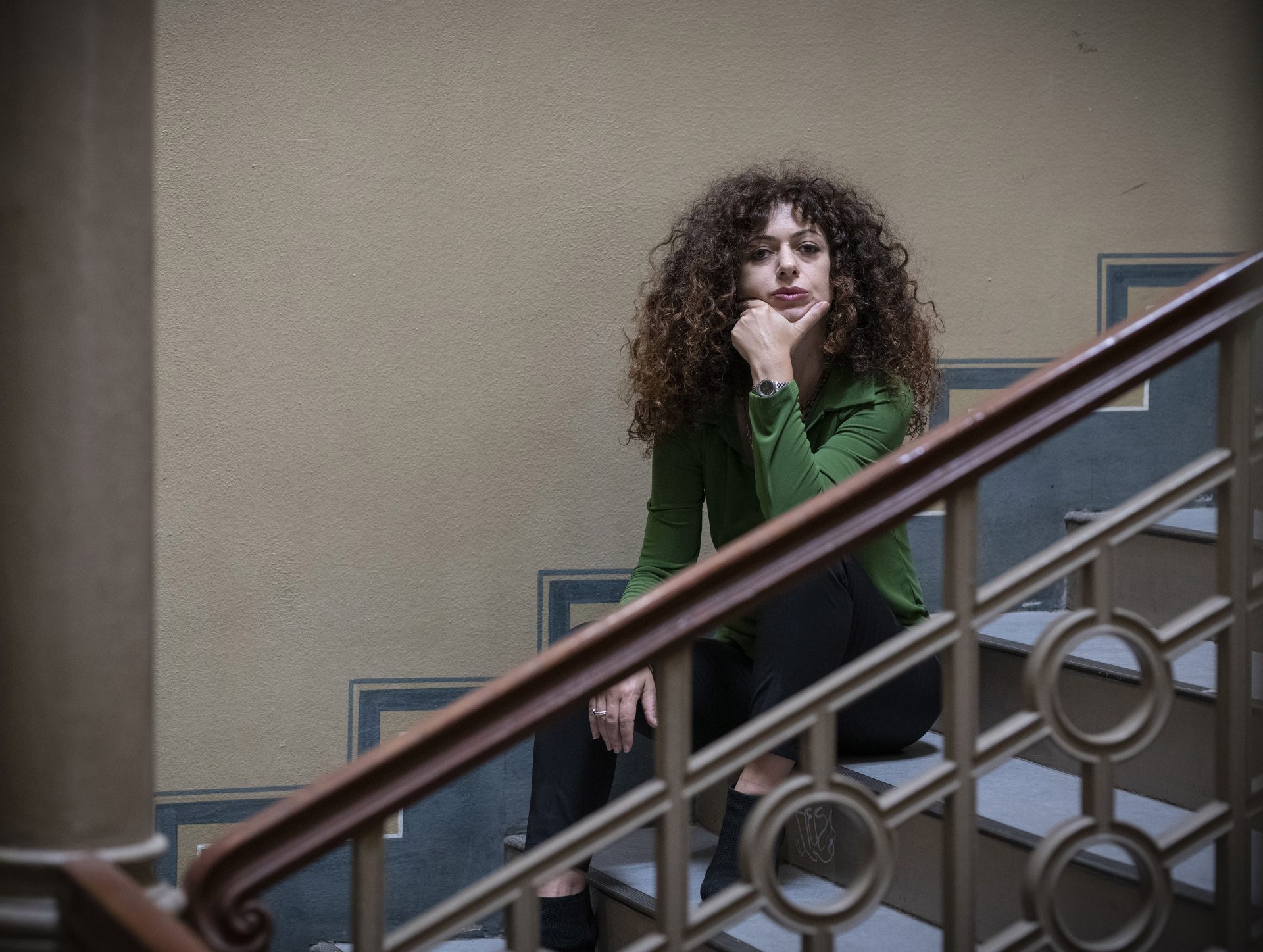Stefan Zweig wrote “The Royal Game” during his years in exile in Brazil. It was published in 1943. As a Jew and an overt pacifist Zweig was persecuted by the Nazis in several respects. In 1938, he went first to Great Britiain and from there on to Brazil. In his novella, which is influenced by Zweig’s own experiences, the game of chess takes on a double meaning: It is a welcome game for the protagonist since it provides an escapist distraction from sheer horror, but it is simultaneously a prison that drives him ever further into madness. In the book, that nervous, feverish state is described as “chess intoxication”; the game has the first-person narrator firmly in its grip and simultaneously reproduces his experiences of solitary confinement quite literally physically.
The story provides the inspiration at various levels for “Aşît” (“The Avalanche”) by artist and filmmaker Pınar Öğrenci, for which she traveled around the Kurdish region of Van in the East of Turkey, more precisely to Müküs. Öğrenci herself was born in the region, her father comes from Müküs itself, which is often difficult to reach in bad weather. He last saw the remote place at the age of ten and was never able to visit it again after he left, even though this was his final wish as we learn right at the start of the 60-minute film. However, that is not the sole reason for Öğrenci’s interest in Müküs, as she explained in an interview in 2022. Given its geographic isolation the place is like an oasis that capitalism and the state authorities did not reach until a late point in time and as it such it represents something like a time machine, almost completely protected by the massive rocky mountain sides that surround it: “But this time machine can also be imagined as a kind of prison. So it's like a hotel room where Zweig's character, Doctor B. is isolated.”



CHESS AS A SYMBOL FOR SURVIVAL
This duality runs through “Aşît” like a red thread that flashes up again and again. Even the title is polysemous, has two meanings in Kurdish; on the one hand it means landslide but it can also refer to a catastrophe. In Pınar Öğrenci’s work, the second meaning refers to the genocide committed in 1915 by the government of the Ottoman Empire against the Armenian minority in Turkey, the consequences of which hang over the film like an ominous veil. Drawing on Stefan Zweig’s novella, the artist also finds chess, another polysemous word as in Portuguese it also means prison, to be a symbol for the survival strategies of exiles and persecuted persons, who like the moves on the chessboard try to organize their own lives across national borders. The artist’s own life is also reflected here as she herself was imprisoned after a demonstration for peace in Turkey. In the subsequent trial the prosecution called for an 18-year prison sentence, which is why Öğrenci left the country and after several stays in various European countries finally ended up in Germany.


In “Aşît” the camera repeatedly focuses on the impressive scenery of the Van region: majestic mountain ranges and impassable valleys, enveloped in the eternal white of masses of snow that blankets everything for half the year. Inscribed in the landscape for centuries, architecture and flora bear witness to the Armenian minority that lived here for hundreds of years: small churches, monasteries, bridges, and remains of walnut trees that were planted in large numbers in accordance with Armenian tradition. Silent witnesses of a crime against humanity that is still far from being addressed.
Insight into the Reality of Life in Iran in the 1980s
For her second film, Pınar Öğrenci has chosen “Close-Up” by Iranian director Abbas Kiarostami. In the style of the cinéma vérité, a largely French style of documentary film in which filmmakers interact with the actors, the film tells the story of Hossain Sabzian an impoverished worker in a Teheran printing plant. During a bus ride he meets Mahrokh Ahankhah, a middle-class woman, and apparently on a whim pretends to be the well-known Iranian director Mohsen Makhmalbaf. Visibly impressed the woman invites him to meet her family, as her sons in particular think very highly of the director’s work. Subsequently, Sabzian befriends the family and continues to play the role of the director, who now even wants to make a film with the Ahankhahs. However, at some point, the father becomes suspicious and in the end Sabzian is arrested as an imposter.

Abbas Kiarostami, Close-Up, 1990, Credit: Kanoon, Image via faroutmagazine.co.uk
In “Close-Up” Abbas Kiarostami mixes documentary shots with recreated images. The director was actually involved in preparing another story when an article in a magazine drew his attention to the affair and he immediately decided to follow the events on film. Prior to the court case he was able to persuade both the impoverished print shop worker and the well-to-do family to participate in the film, each playing themselves. Kiarostami reenacted the flashbacks with the protagonists and was actually allowed to film the trial and question the alleged imposter about his motives. Even the successful director Mohsen Makhmalbaf, who Sabzian pretended to be, appears at the end of “Close-Up”. The film impressively succeeds in drawing a very specific picture of Iranian life at the end of the 1980s, while nevertheless managing to capture a larger picture of society as a whole. Abbas Kiarostami’s film also addresses art as a means of creating a counter-reality, which thus becomes a survival strategy and the last glimmer of hope in a reality that can hardly be endured any longer.

Abbas Kiarostami, Close-Up, 1990, Image via devotudoaocinema.com.br
